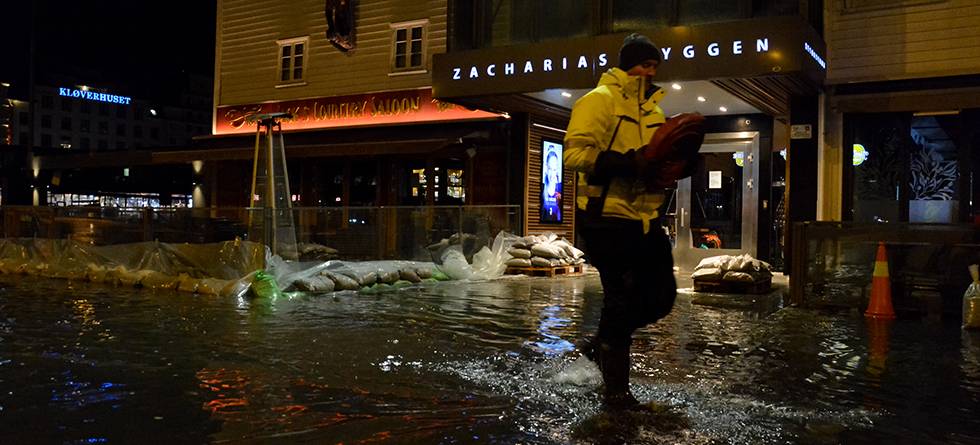Tides are caused by the moon and the sun. The highest sea level, spring tides, occur at new and full moon, when the Sun, the Moon and the Earth align.
On top of the astronomical tides, the sea level is influenced by weather. Strong winds can push water towards the coast, and low air pressure makes the sea rise higher. The combination of the astronomical tide and a storm surge is called a storm tide.
A recently published article considers storm surge events at the coast of Norway. The researchers behind the study have looked into the highest recorded tides at 21 places during the last thirty years.
In most of these events the highest sea level occurred at a time of an extreme astronomical tide combined with a moderate storm surge, or oppositely, during moderately high tides and extreme contributions from the weather.
Rarely was the extreme sea level reached with an extreme storm surge on top of an extreme astronomical tide.
The sea may rise higher
Less fortunate timing opens for the possibility of higher storm tides, according to one of the researchers behind the study, Stephen Outten, from the Bjerknes Centre and the Nansen Environmental and Remote Sensing Center.
“If you had the largest storm surge observed during the last thirty years co-occurring with the highest possible astronomical tide, you would have a higher sea level than observed during this period," he says.
Outten emphasizes that their results are based on observations of the previous decades, not on the mechanism of tides or of the region's bathymetry. He and his colleagues have not looked into whether narrow sounds or other local conditions could stop the water from entering fjords or bays.
1000-year flooding occurred twice
"In Bergen the 1000-year return level has been exceeded twice during the last thirty years, if only by one and two centimeters," Tobias Wolf says.
Wolf coordinated the research while employed at the Bjerknes Centre and the Nansen Environmental and Remote Sensing Center.
The location of hospitals, schools and other critical infrastructure is regulated to avoid tides assumed to occur once every thousands years on average. Sea level rise due to climate change is taken into account when determining these limits.
Reference
Wolf T, Outten S, Mangini F, Chen L and Nilsen JEØ (2023), Analysis of storm surge events along the Norwegian coast. Front. Earth Sci. 11:1037826. doi: 10.3389/feart.2023.1037826

